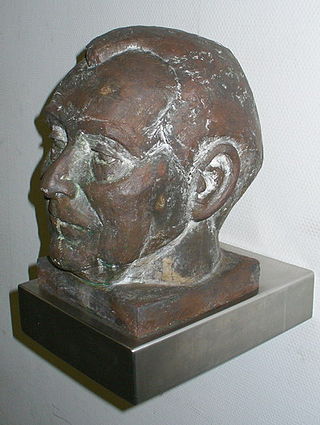Related Research Articles

IG Metall is the dominant metalworkers' union in Germany, making it the country's largest union as well as Europe's largest industrial union. Analysts of German labor relations consider it a major trend-setter in national bargaining.
Trade unions in Germany have a history reaching back to the German revolution in 1848, and still play an important role in the German economy and society.
Lothar Lindner is a former German trade union leader. He was chairman of the central committee of the building and timber industry union in the East German Free German Trade Union Federation and President of the International Federation of Unions in the building, timber and building materials industries in the World Federation of Trade Unions (WFTU).
Horst Heintze was a German trades union official and politician. Through the union movement he rose to become a member of the People's Chamber (Volkskammer) in the German Democratic Republic and, from 1963, a member of the powerful Party Central Committee. He was unusual in rising this far through the power structure of the country despite having been a Nazi Party member in his youth.

Willi Bleicher was one of the best known and, according to at least one source, one of the most important and effective German trades union leaders of the post-war decades.
The Union of Mining and Energy was a trade union in West Germany which existed from 1946 until 1997.
The Chemical, Paper and Ceramic Union was a trade union representing chemical, oil refinery, paper, rubber, ceramics, glass and plastics workers in West Germany.
Reinhard Sommer is a German former trade union leader.
The Industrial Union of Textiles, Clothing and Leather was a trade union representing workers in the textile, clothing, leather, and tobacco industries in East Germany.
The Industrial Union of Transport and Communication was a trade union representing workers in the transport and communication sectors in East Germany.
The Industrial Union of Mining and Energy was a trade union representing the mining, energy and water industries in East Germany.
The Union of Land, Food and Forests was a trade union representing workers in various related industries in East Germany.
The Industrial Union of Chemicals, Glass and Ceramics was a trade union representing workers in various industries in East Germany.
Walter Tille was a German trade union leader.
The Industrial Union of Construction and Wood was a trade union representing construction and wood workers in East Germany.
The Industrial Union of Printing and Paper was a trade union representing workers in the printing industry in East Germany.
The Union of Academic Research was a trade union representing university and college staff and those in related jobs in East Germany.
The Wismut Industrial Union was a trade union representing workers at the Wismut uranium mining company.
Werner Peplowski is a former German trade union leader.

Workers of the German auto manufacturer Volkswagen Group are collectively organized and represented by unions and Works Councils across the globe. Workers are organized on multiple levels; locally, regionally, nationally, internationally and by marque.
References
- 1 2 3 "IG Metall - IG Metall/Metallurgie (1946-90)". FDGB-Lexikon. Friedrich Ebert Stiftung. Retrieved 7 July 2020.